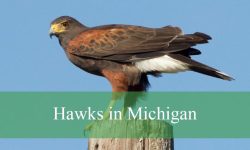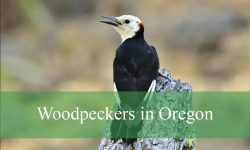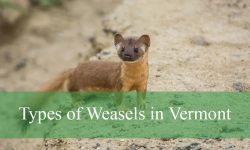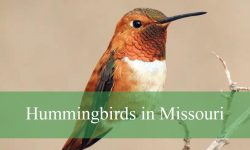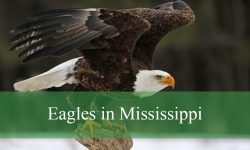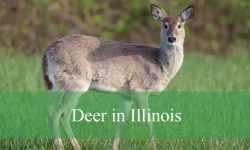Utah is home to a variety of beautiful blue birds that bring vibrant color to its diverse landscapes. From open meadows to forested mountains, blue birds in Utah can be seen throughout the year. These species add a special charm to the state’s natural scenery.
Blue birds in Utah include the bright and iconic Mountain Bluebird as well as smaller, colorful birds like the Lazuli Bunting and Violet-green Swallow. Each bird has unique markings and behaviors that make spotting and identifying them an enjoyable experience. Their presence reflects the rich bird diversity in Utah’s habitats.
This guide features 14 stunning blue birds in Utah, complete with pictures and identification tips. Learn where to find these birds and what makes each species unique while exploring Utah’s remarkable wildlife.
Common Blue Birds Found in Utah
Mountain Bluebird (Sialia currucoides)
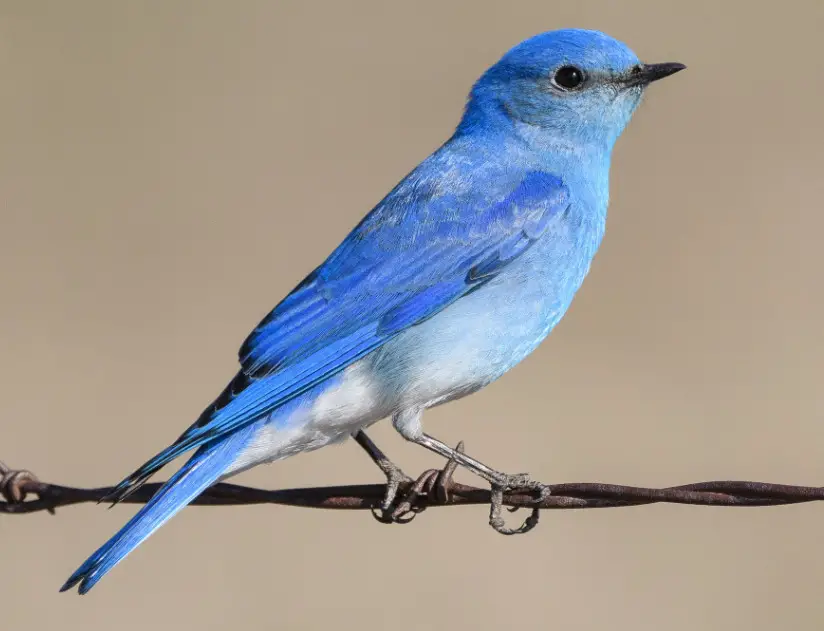
The Mountain Bluebird is a medium-sized thrush that measures about 7 to 8 inches in length with a wingspan of 12 to 14 inches. It is famous for its vibrant, sky-blue plumage, especially in males, while females have a softer grayish-blue color with hints of blue on their wings and tail. This sexual dimorphism makes males easy to spot during the breeding season. Their slender body and sharp, thin bill help them catch insects efficiently.
Mountain Bluebirds are known for their calm and gentle behavior. They often perch on fence posts or low shrubs, scanning the ground for prey such as beetles, grasshoppers, and other insects. They also eat berries and fruits during colder months when insects are scarce. These birds are cavity nesters, often using old woodpecker holes or nesting boxes provided by humans.
In Utah, Mountain Bluebirds are mostly found in open habitats such as meadows, high-altitude grasslands, and prairies, especially in mountainous regions. They prefer areas with scattered trees or shrubs where they can hunt and nest. During the winter, some populations migrate to lower elevations or southern areas, but many stay year-round in milder climates.
Their bright coloration and melodic song make them a favorite among birdwatchers in Utah. Conservation efforts, including providing nesting boxes, have helped maintain stable populations despite habitat changes. Observing these bluebirds in Utah’s wide open spaces is a delightful experience for nature enthusiasts.
Western Bluebird (Sialia mexicana)
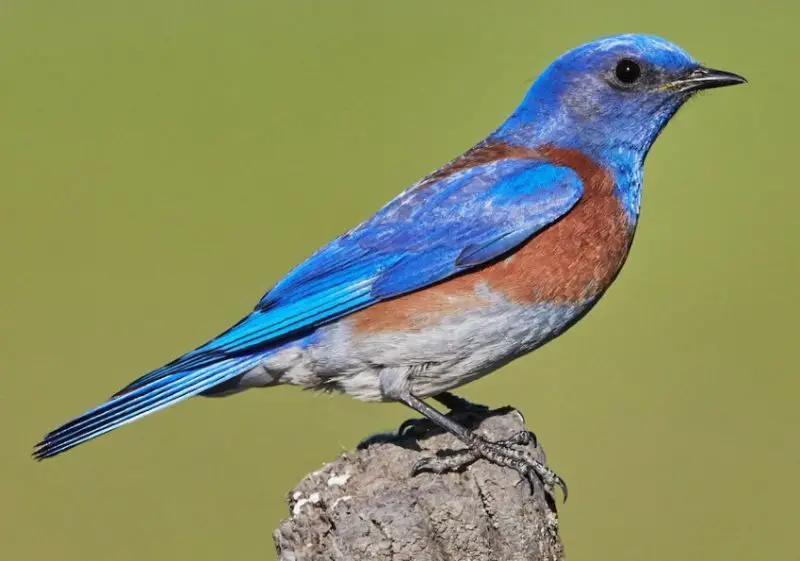
The Western Bluebird is slightly smaller than the Mountain Bluebird, averaging about 6.5 to 7.5 inches in length with a wingspan of roughly 12 inches. It has a distinctive coloration: males feature deep blue heads and backs with bright rusty-orange on their breast and sides, while females have duller blue and gray tones mixed with the orange. This contrast makes the Western Bluebird easy to identify, especially when compared to the more uniformly blue Mountain Bluebird.
Behaviorally, Western Bluebirds are social and often seen in small flocks outside the breeding season. They feed mainly on insects and berries, catching flying insects mid-air or picking them off plants and the ground. They nest in tree cavities, often occupying abandoned woodpecker holes, and readily use nest boxes. Their song is a soft, warbling melody that varies regionally.
In Utah, Western Bluebirds are most commonly found in open pine forests, woodland edges, and foothills, primarily in the southern and central parts of the state. They favor habitats with scattered trees and shrubs that provide ample nesting sites and foraging opportunities. During migration, they may venture into lower elevations and more open areas.
The Western Bluebird’s striking colors and gentle nature make it a popular sight in Utah’s forested landscapes. Habitat preservation and nest box programs have contributed to their presence in areas impacted by logging or development. Birdwatchers enjoy spotting them especially in the spring when males display their vibrant plumage.
Lazuli Bunting (Passerina amoena)
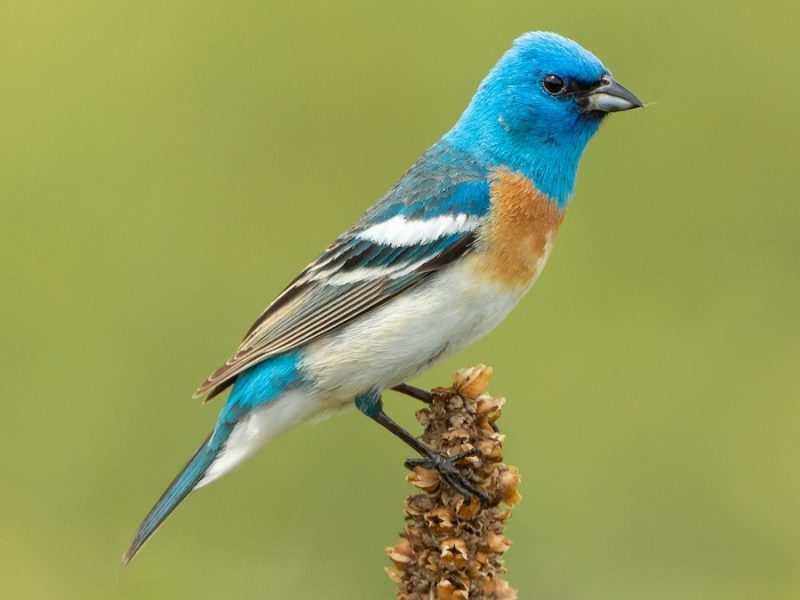
The Lazuli Bunting is a small songbird about 5 to 6 inches long, known for its brilliant and colorful plumage. Males have a vivid blue head, back, and wings, contrasted with a bright rusty-orange breast and white belly. Females and juveniles are more muted, showing a mix of brown, gray, and faint blue hues. This striking coloration helps males attract mates during the breeding season.
Lazuli Buntings are active and often found flitting through shrubs and low trees. Their diet primarily consists of seeds, berries, and a variety of insects like caterpillars and beetles. They are known for their sweet, musical song which they sing from exposed perches to defend territory and attract females.
In Utah, Lazuli Buntings favor shrubby habitats such as riparian corridors, brushy foothills, and edges of woodlands, especially in the spring and summer months. They prefer areas with dense undergrowth that provide both food sources and shelter from predators. Their range in Utah is generally in the southern and central regions where such habitats are available.
Because of their vibrant colors and lively behavior, Lazuli Buntings are a favorite among bird enthusiasts in Utah. They are less common than the bluebirds but add a splash of color to riparian and shrubby landscapes during the breeding season. Conservation of riparian habitats helps maintain their population health.
Barn Swallow (Hirundo rustica)
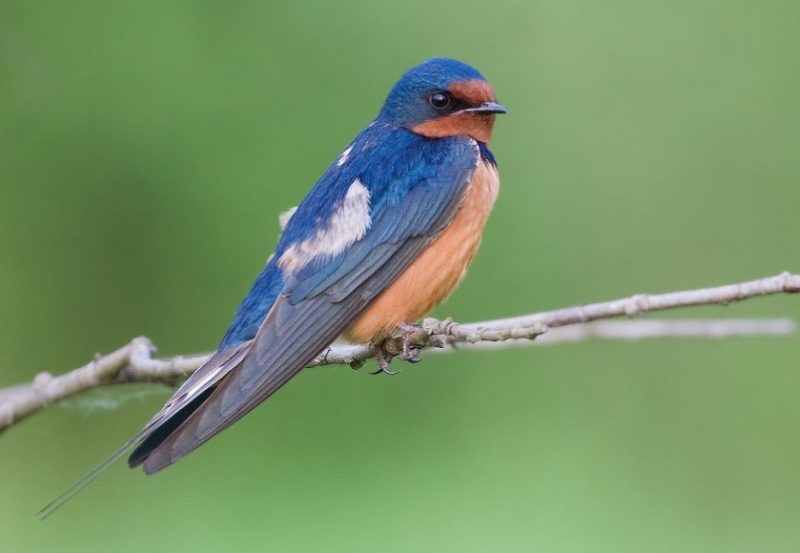
The Barn Swallow is a slender bird about 7 inches long with a wingspan of approximately 12 to 13 inches. It is mostly glossy blue on the back and wings, with a distinctive rusty-red throat and forehead. One of its most recognizable features is its long, deeply forked tail that aids in agile flight. The female looks similar but has a shorter tail and duller colors.
Barn Swallows are highly aerial and skilled flyers, often seen swooping gracefully over fields and water bodies catching insects in flight. They feed primarily on flying insects like flies, beetles, and wasps. These birds are social and nest colonially, building mud nests attached to buildings, bridges, and other man-made structures.
In Utah, Barn Swallows are widespread in farmland, open fields, and near water sources where insects abound. They migrate through the state in spring and fall and breed during the warmer months. Their preference for nesting on human structures makes them a common sight in rural and suburban areas.
Barn Swallows are admired for their elegant flight patterns and their role in controlling insect populations. Their presence in Utah is closely tied to open agricultural landscapes and wetlands. Watching these blue-backed birds darting across the sky is a favorite pastime for many nature lovers.
Tree Swallow (Tachycineta bicolor)
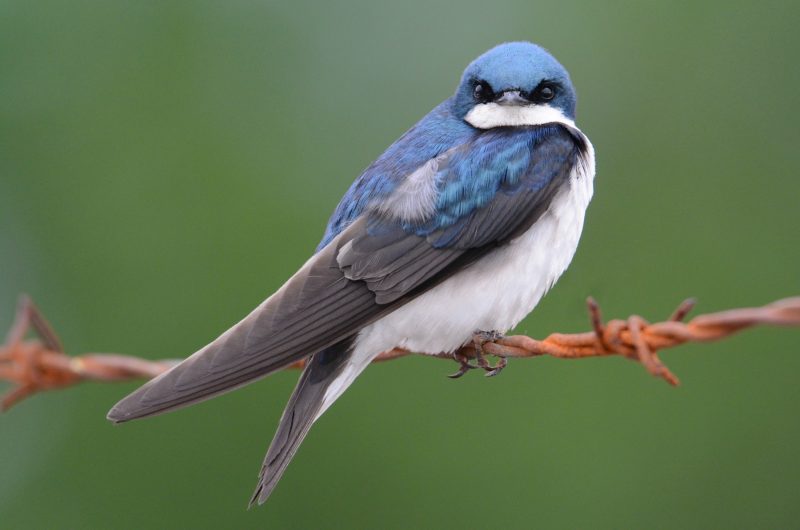
Tree Swallows are small birds measuring about 5 to 6 inches long with a wingspan of around 12 inches. They have striking glossy blue-green upperparts and bright white underparts. Their slightly iridescent backs shimmer in sunlight, making them stand out during flight. Females and males look similar, though females may have a duller sheen.
These swallows are highly skilled aerial insectivores, feeding mostly on flying insects such as gnats and mosquitoes. They are cavity nesters, using tree holes or nest boxes near water bodies like ponds, lakes, and marshes. Tree Swallows are migratory and are typically seen in Utah during spring and early summer as they breed and raise young.
In Utah, Tree Swallows prefer open wetland habitats, including marshes and lakeshores, where insect prey is abundant. They often nest in groups and can be seen performing agile flight maneuvers while hunting. After breeding, they migrate south to winter along the southern U.S. and Central America.
The combination of their shimmering blue-green plumage and acrobatic flight makes Tree Swallows a delight to observe. Their presence in Utah marks the arrival of spring and the return of insect-rich habitats. Conservation of wetlands benefits these beautiful swallows greatly.
Blue Grosbeak (Passerina caerulea)
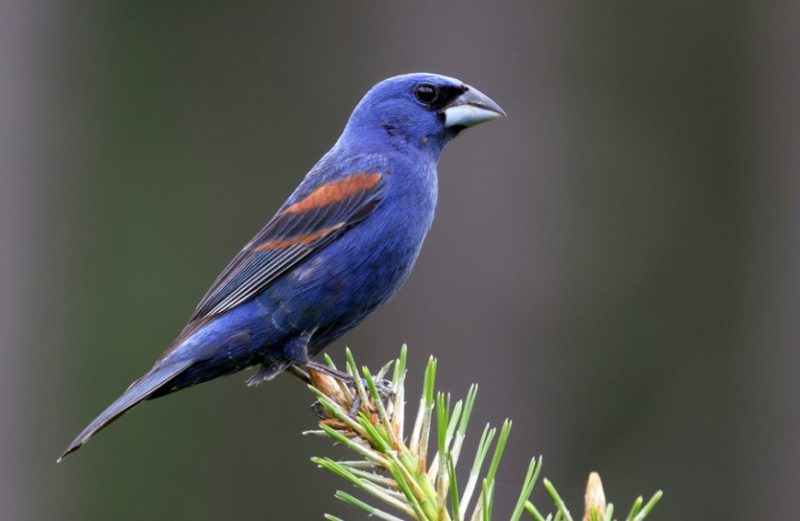
The Blue Grosbeak is a robust, chunky songbird measuring about 6 to 7 inches in length with a wingspan of roughly 9 to 11 inches. Males display a rich deep blue plumage contrasted with distinctive rusty wing bars, while females are more brownish with subtle blue highlights. This vivid coloration makes males stand out during the breeding season. Their thick bills are well adapted for cracking seeds and catching insects.
Behaviorally, Blue Grosbeaks are known for their strong, melodic songs used to establish territory and attract mates. They primarily feed on a mixed diet of seeds, grains, and a variety of insects such as beetles and grasshoppers. These birds are often seen perched low in shrubs or flying in short bursts through dense vegetation.
In Utah, Blue Grosbeaks breed mainly in shrubby habitats, overgrown fields, and brushy areas, especially in southern regions during the summer months. They prefer habitats with dense cover that provides protection and nesting opportunities. Their presence in Utah is somewhat localized but noticeable during the warmer seasons.
Their deep blue feathers and lively song add vibrant color and sound to Utah’s summer landscapes. Conservation of shrubby habitats is important to support their breeding success. Birdwatchers enjoy spotting these grosbeaks as part of Utah’s diverse songbird community.
Steller’s Jay (Cyanocitta stelleri)
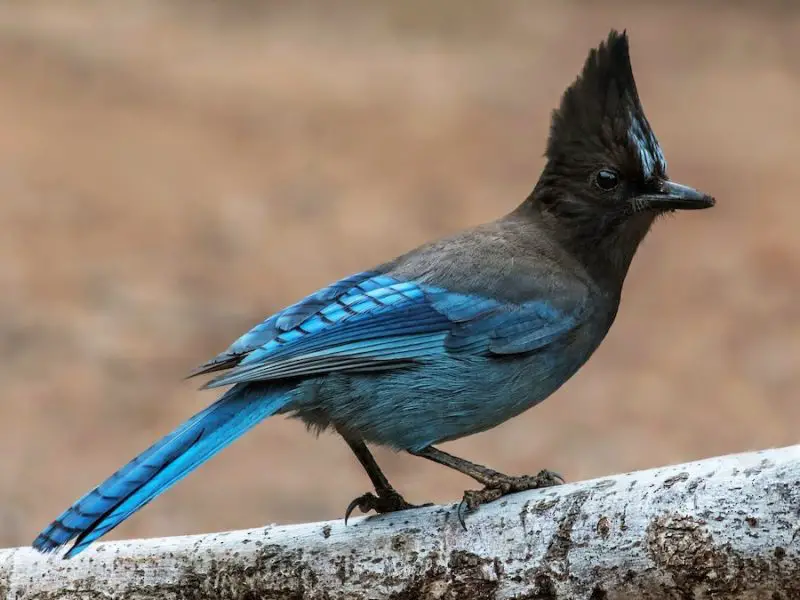
Steller’s Jay is a striking bird about 11 to 12 inches long with a wingspan of approximately 16 to 18 inches. It has deep blue body plumage with a black head and prominent spiky black crest. The contrasting colors and bold crest make Steller’s Jay unmistakable. Their sturdy bodies and sharp bills help them forage in forested environments.
These jays are highly intelligent and vocal birds, known for their wide range of calls and loud, harsh screams. They are opportunistic feeders, eating seeds, nuts, insects, small animals, and even human food scraps. Steller’s Jays are curious and bold, often approaching campsites and picnic areas.
In Utah, Steller’s Jays inhabit coniferous forests primarily in northern and eastern parts of the state. They prefer higher elevations where pine, fir, and spruce trees dominate. They are year-round residents and often seen hopping energetically through forest understory or perched on tree limbs.
Their bold appearance and raucous calls make them a familiar and charismatic presence in Utah’s mountain forests. They play an important role in seed dispersal and forest ecology. Many hikers and campers enjoy observing these vocal birds during their outdoor adventures.
Woodhouse’s Scrub-Jay (Aphelocoma woodhouseii)

Woodhouse’s Scrub-Jay is a medium-sized bird around 11 inches long with a wingspan near 15 inches. It features a dusty blue coloration on the head, wings, and tail, paired with a grayish-white belly and throat. The overall muted blue-gray tones help it blend well into Utah’s dry, scrubby landscapes.
This jay is a highly adaptable and intelligent bird, often seen foraging on the ground or in low shrubs. Its diet includes acorns, seeds, berries, insects, and small vertebrates. Woodhouse’s Scrub-Jays are known for their resourcefulness, sometimes caching food for later use and displaying complex social behaviors.
In Utah, they are common year-round residents, thriving in pinyon-juniper woodlands, desert scrub, and even suburban areas where trees and bushes provide cover. Their ability to live close to human habitation has helped maintain stable populations across the state.
Woodhouse’s Scrub-Jays are a familiar sight in Utah’s diverse habitats. Their blue-gray hues and lively behavior make them a favorite among local birdwatchers. They contribute to seed dispersal and play an important ecological role in their environments.
Belted Kingfisher (Megaceryle alcyon)
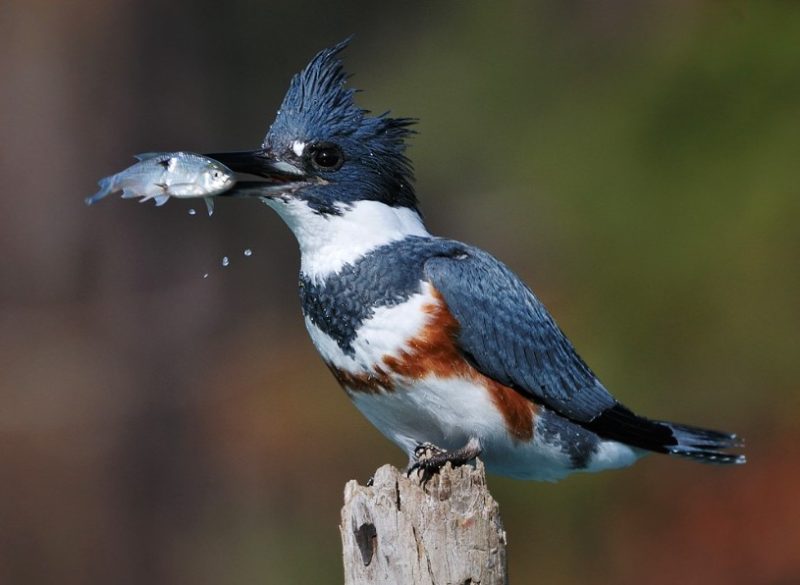
The Belted Kingfisher is a medium-sized bird approximately 11 to 14 inches long with a wingspan of about 19 to 23 inches. It has a distinctive blue-gray back, a shaggy crest atop its head, and a white collar around its neck. Both males and females have a slate-blue band across their chest, but females also display an additional rusty band on their belly.
These kingfishers are expert fish hunters, often seen perched near rivers, lakes, and streams where they dive headfirst into the water to catch small fish. They also eat aquatic insects, crustaceans, and amphibians. Their loud, rattling call is a familiar sound near Utah’s waterways.
In Utah, Belted Kingfishers are widespread near freshwater habitats across the state. They nest in burrows dug into sandy or earthen banks along water bodies, making riverbanks and reservoirs ideal habitats. They are most active during the breeding season in spring and summer.
The striking blue-gray plumage and distinctive hunting style make Belted Kingfishers a fascinating bird to observe in Utah. Their presence is an indicator of healthy aquatic ecosystems. Wildlife watchers often enjoy spotting them along rivers and lakes.
Pinyon Jay (Gymnorhinus cyanocephalus)

The Pinyon Jay is a medium-sized jay about 11 to 12 inches long with a wingspan around 16 to 17 inches. It has dusty blue feathers with a slightly paler head and a stout bill. Its uniform blue coloration and sociable behavior make it easily recognizable in its preferred habitats.
Pinyon Jays are highly social and noisy birds, often seen traveling in large flocks. They have a unique behavior of caching seeds, particularly pinyon pine nuts, storing them in the ground to eat later. This behavior helps disperse pine seeds and benefits forest regeneration. Their diet includes seeds, berries, and insects.
In Utah, Pinyon Jays inhabit pinyon-juniper woodlands mainly in the central and southern parts of the state. They thrive in these dry, open forests and are a common sight for birdwatchers exploring Utah’s sagebrush and woodland regions.
Their gregarious nature and blue plumage make Pinyon Jays a lively and important part of Utah’s ecosystem. By spreading pine seeds, they contribute to forest health and biodiversity. Observing their flocking behavior is a memorable experience for those visiting Utah’s woodlands.
Indigo Bunting (Passerina cyanea)
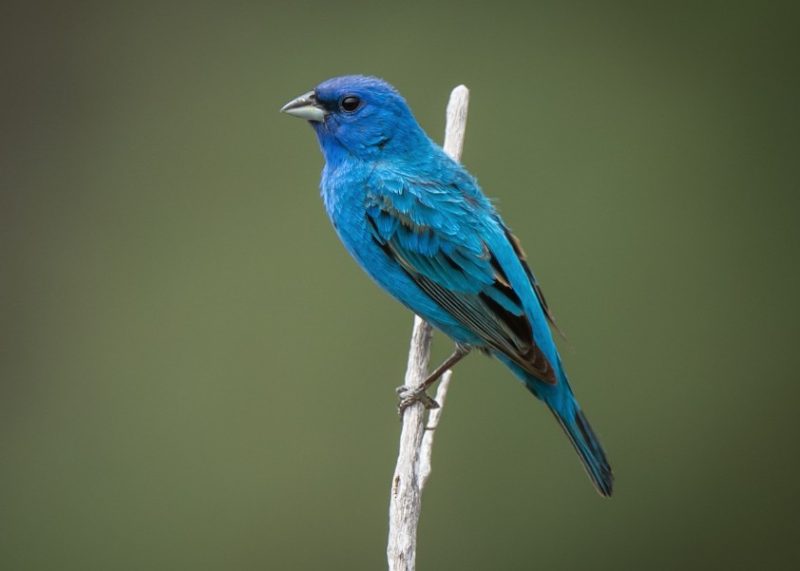
Though less common than the Lazuli Bunting, Indigo Buntings can occasionally be spotted in Utah during migration seasons. The male Indigo Bunting boasts brilliant, vibrant blue plumage covering its entire body, while the female displays softer brownish tones that help with camouflage. This striking sexual dimorphism makes males easy to identify even at a distance.
Indigo Buntings prefer habitats with dense shrubs, woodland edges, and brushy areas where they can forage and hide from predators. Their diet mainly consists of seeds, berries, and insects, which they glean from vegetation or catch mid-air. Males sing a clear, high-pitched song from exposed perches to establish territory and attract mates.
In Utah, Indigo Buntings are generally seen in spring and fall as they pass through during migration. They are more likely to be observed in riparian corridors and shrubby habitats scattered throughout the state. Although they do not breed widely in Utah, their presence adds to the diversity of migrating songbirds.
These birds’ brilliant blue coloration and melodic song make spotting them a special treat for Utah birdwatchers. Protecting riparian and shrubby habitats benefits this species during its migratory journeys through the region.
Violet-green Swallow (Tachycineta thalassina)
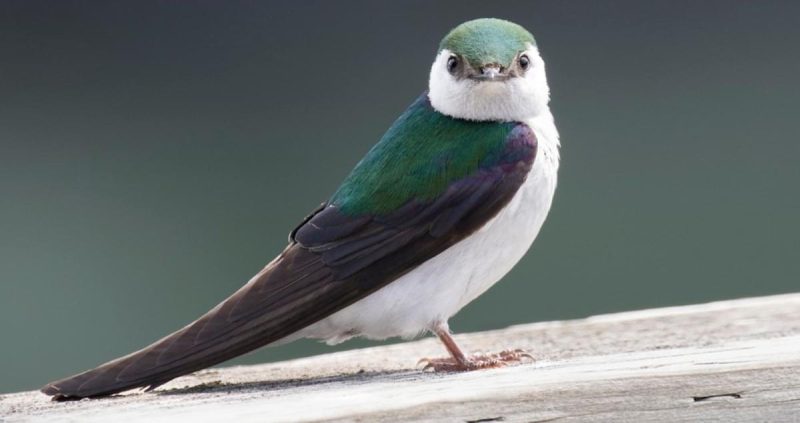
The Violet-green Swallow is a small, agile bird about 5 to 6 inches long with a wingspan near 12 inches. Its glossy back shimmers with iridescent green and violet hues, contrasting sharply with its clean white underparts. Both males and females share similar plumage, making them identifiable by their distinctive colors and swift flight patterns.
These swallows are expert aerial insectivores, catching flies, gnats, and other small insects on the wing. They prefer to nest in tree cavities or man-made nest boxes near water bodies such as lakes, rivers, or mountain streams. Their acrobatic flight and quick maneuvers make them a joy to watch.
In Utah, Violet-green Swallows are typically found in open forested areas and near water during spring and summer, particularly at higher elevations in the mountains. They breed in the state and migrate southward during colder months. Their presence is often noted around wetlands and riparian zones.
The striking iridescence of their feathers combined with their swift, graceful flight makes Violet-green Swallows a captivating species to observe in Utah’s natural landscapes. Protecting their nesting sites and water habitats is key to their continued presence.
Cliff Swallow (Petrochelidon pyrrhonota)
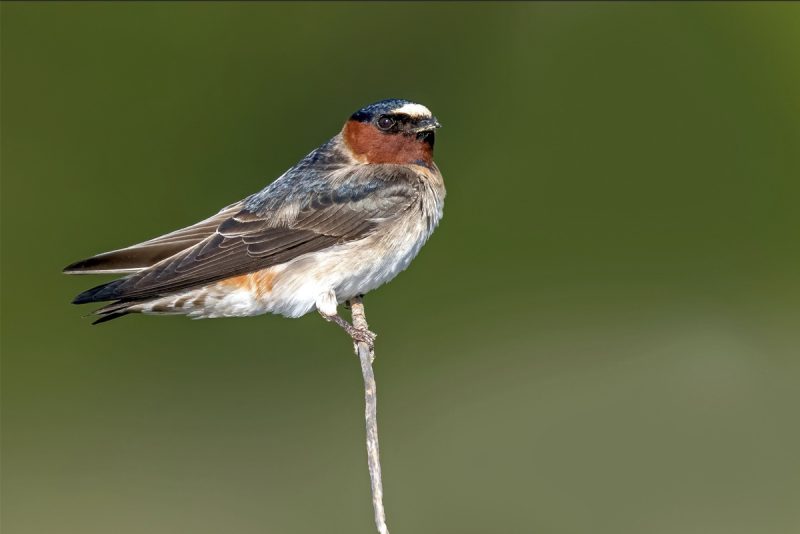
Cliff Swallows are medium-sized swallows measuring around 5 to 6 inches in length with a wingspan of approximately 12 inches. While not entirely blue, their backs exhibit a glossy dark blue-black sheen that catches the light beautifully. Their faces and throats are a warm rusty color, contrasting with their pale underparts.
These birds are renowned for their distinctive nests, which they build from mud pellets attached in large colonies on vertical surfaces like cliffs, bridges, and buildings. Cliff Swallows are highly social, often gathering in large groups during the breeding season. They feed mainly on flying insects, caught in swift, agile flights.
In Utah, Cliff Swallows are widespread during the breeding season, favoring areas with abundant mud for nest building and proximity to water. They commonly nest on natural cliff faces as well as human structures, making them a familiar sight in both rural and urban areas during spring and summer.
Their colonial nesting habits and shimmering backs make Cliff Swallows an interesting and important part of Utah’s bird community. Observing their bustling mud nests and aerial feeding behaviors provides a glimpse into their complex social lives.
Purple Martin (Progne subis)
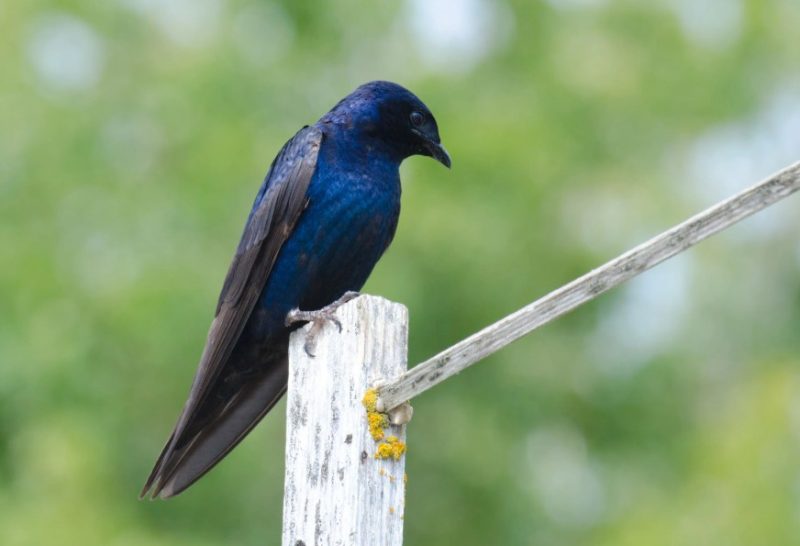
Purple Martins are the largest swallows in North America, measuring about 7 to 8 inches in length with a wingspan of 13 to 16 inches. Males have glossy, iridescent dark blue-purple plumage covering their entire body, while females and juveniles tend to be duller with grayish underparts. Their sleek bodies and long, pointed wings make them powerful flyers.
These birds are highly social cavity nesters, relying almost exclusively on man-made birdhouses or gourds for breeding sites, especially in the eastern U.S. In Utah, Purple Martins are less common but can be found in areas with available nesting structures, often near water. They feed on flying insects, catching them in graceful, acrobatic flights.
Purple Martins migrate long distances and are present in Utah mostly during the summer months. Their populations here are smaller compared to other swallow species, but conservation efforts such as providing nesting houses have helped support them. They are important insect predators and are appreciated for their elegant flight.
The shimmering purple-blue plumage and their status as North America’s largest swallow make Purple Martins a prized species for Utah bird enthusiasts. Their dependence on nesting structures means human support is crucial for their continued presence in the region.
FAQ about Blue Birds in Utah
What are the most common blue birds found in Utah?
The most common blue birds in Utah include the Mountain Bluebird, Western Bluebird, Lazuli Bunting, Tree Swallow, and Barn Swallow. These species are often seen across various habitats such as open meadows, woodlands, riparian areas, and near water sources throughout the state.
Which blue bird is the state bird of Utah?
The Mountain Bluebird (Sialia currucoides) is the official state bird of Utah. It is known for its bright sky-blue color in males and its presence in open habitats like high-altitude meadows and grasslands.
When is the best time to see blue birds in Utah?
Blue birds can be observed throughout the year in Utah, but spring and summer are the best seasons for spotting breeding males with vibrant plumage. Migratory species like the Indigo Bunting and Tree Swallow are typically seen during spring and fall migrations.
Where do blue birds typically nest in Utah?
Blue birds in Utah nest in a variety of locations depending on the species. Mountain and Western Bluebirds prefer natural cavities or nest boxes in open areas, Lazuli Buntings nest in dense shrubs, and swallows often build mud nests on cliffs or human structures near water.
What do blue birds in Utah eat?
Blue birds have varied diets that mostly include insects, seeds, and berries. For example, Mountain and Western Bluebirds primarily feed on insects like beetles and grasshoppers, while Lazuli Buntings consume seeds and berries. Swallows catch flying insects during flight.
How can I attract blue birds to my backyard in Utah?
To attract blue birds, provide suitable nesting boxes, especially for Mountain and Western Bluebirds, and maintain native shrubs and trees that offer food and shelter. Avoid pesticides to ensure a healthy insect population, and provide fresh water sources for drinking and bathing.
Are any blue bird species in Utah migratory?
Yes, several blue bird species in Utah are migratory. For example, the Tree Swallow and Indigo Bunting migrate through Utah during spring and fall. Mountain Bluebirds may also move to lower elevations during winter, while some other species are year-round residents.
What habitats do blue birds prefer in Utah?
Blue birds occupy diverse habitats in Utah. Mountain Bluebirds prefer open meadows and grasslands at higher elevations, Western Bluebirds favor open pine forests and woodlands, Lazuli Buntings inhabit shrubby riparian areas, and swallows are often found near water bodies and open fields.
Are blue birds in Utah threatened or endangered?
Most blue bird species in Utah, such as Mountain Bluebirds and Western Bluebirds, have stable populations thanks to conservation efforts like nesting box programs. However, habitat loss and pesticide use can pose threats. Supporting habitat preservation helps maintain healthy blue bird populations.
How can I learn more about blue birds in Utah?
You can learn more by visiting local nature centers, joining birdwatching groups, or using field guides and apps dedicated to Utah’s birds. Participating in citizen science projects like bird counts can also deepen your knowledge and help conservation efforts.

